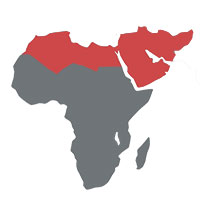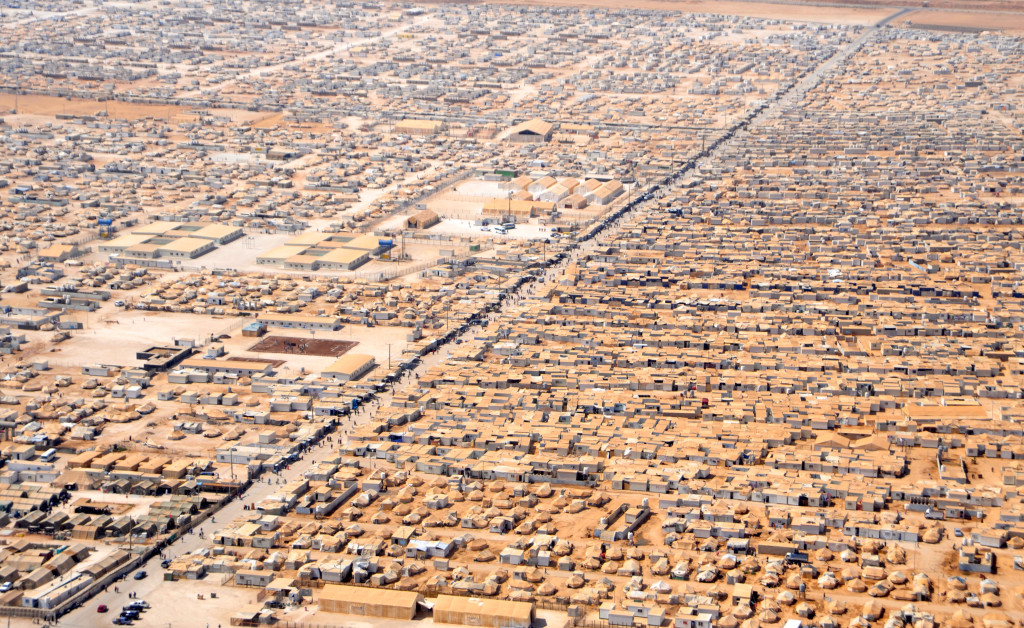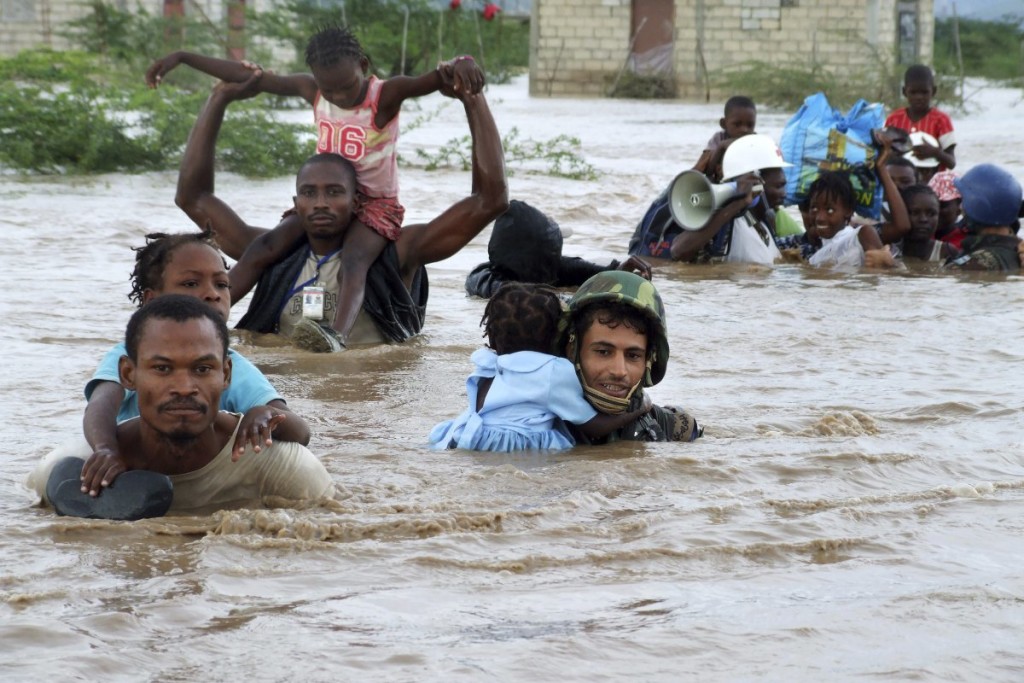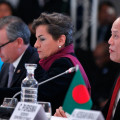Does Climate Change Cause Migration?
Juan Mayorga | December 11, 2015.
In the weeks leading up to the Paris climate change conference, and during COP21 itself, high-profile voices like those of Barack Obama, Prince Charles, Al Gore, Francois Hollande and Pope Francis warned climate change is a trigger for migration around the world. Prince Charles and the French President went even further by connecting climate change with the conflict in Syria, noting the several years of exceptional drought preceding the conflict.
Drawing a correlation between the refugee crisis and climate negotiations raises issues of food, water security and urban infrastructure. The UN Refugee Agency warns in a recent study that food and water insecurity could drive competition for scarce resources, even greater displacement, due to climate change.
Alfredo Zamudio of the Internal Displacement Monitoring Centre, puts the number of people displaced by climate related disasters at 22.5 million every year – a figure that has increased by 60 per cent since 1970. Whatever the validity of the exact numbers, the trend seems to be clear: climate migration is getting worse.
The International Organization for Migration depicts forced migration as a hurdle in a variety of ways. Among these are increased pressure on urban infrastructure and services, undermining growth and increasing the risk of conflict, leading to worse health, education and social indicators for the migrants themselves.
Major institutions such the US Department of Defense have labelled climate change a “threat multiplier.” The IPCC – the highest authority in climate science – defines climate change as a threat to human security.
The staggering scale of the Syrian refugee crisis refreshed the debate on climate migration. An eight-year drought in the Fertile Crescent resulted in 75 per cent of farmers suffering total crop failure and over 1.5 million people forced into urban areas. This has been echoed in reports by The New York Times, The Guardian, Time, Reuters and CNN, mostly in the aftermath of the refugee crisis in Europe that started last summer.
Despite this political and institutional push from some corners, the topic is not high on the public agenda, and one of the main reasons for this is simple scientific disputes.
Most of the media wave on the issue departs from a study published in early 2015, which found that:
“There is evidence that the 2007−2010 drought contributed to the conflict in Syria.”
So why is the hesitation if there are scientific basis?
Many critics have pointed to fundamental flaws in the study’s methodology. Among the criticised aspects is the focus on the entire Fertile Crescent, a region that stretches from the East Mediterranean to Saudi Arabia and Iran, as opposed to just Syria. The downside of this research is that it is rather difficult to match the regional drought, most of which appears to have been concentrated in Iraq and Turkey, as a particularly Syrian affair. Furthermore, there are inconsistencies in the study’s figure of people migrating from rural to urban Syria, with the study claiming 1.5 million and UN agencies estimating 250,000.
But even the authors of this study note climate change is just one factor among many and pointed to the fact that “poor policies and unsustainable land use” are also to blame for the Syrian crisis. They defended their paper in an opinion published by Fortune:
“While we cannot say that this [Syrian] drought was surely caused by manmade climate change, we do know that this severe of a drought was made two to three times more likely by the greenhouse gases humans have added to the atmosphere” – report authors.
For Dr. Robert Oakes of the United Nations University, an expert in climate change and environmentally related migration, the link between droughts and the crisis in Syria has been “overstated”. Speaking with The Verb, Oakes argued “we need to be very careful” about drawing links between climate changes and conflicts.
But while it is impossible to blame migration solely on a single factor behind the Syrian refugee crisis, not even Oakes and other scientists dare to deny the link between both. The thing is that scientific community is holding hard to its rigorous procedures that are well known for being long and complex, it is not possible to catch up with the rapidly evolving migrating situations around the world.
Al Gore was one of several message conveyors that have been cautious in highlighting the “systemic” relationship that binds climate and migration. Gore argued against the idea of lineal causality between events during a passionate speech in Paris:
“Is climate change causing migration? Absolutely! Is it the only cause? No.”
A recent study on climate migration used one of the soundest methodologies so far to analyse climate migration. It focused at the front line of this phenomenon: the low, threatened islands of Kiribati, Nauru and Tuvalu in the Pacific that are threatened with being watered by rising seas. “These islands are just the canary in the cage”, explained Oakes, arguing that “climate change intensifies environmental stresses.”
The results of the study were presented in the COP21 by a high-level panel of scientists including by Koko Warner, lead author on migration for the IPCC. The key messages were that there are “no simple links” between migration and any other driver and, “there are not more political reasons for migration than natural”. Although this last point leaves the door open to climate change migration, it was not explicitly stated.
Of people surveyed in Kiribati for this study, 23 per cent named climate change as a reason for migrating, with a five to one ratio favouring internal migration over external. The study also projected, based in a medium climate change scenario, that internal migration in Tuvalu would increase 100 per cent by 2055.
The problems facing the Pacific islands, Oakes argues, is being increasingly recognised as “caused by the global North.” But this should not explode into a feeling of payback against developed countries, because this tends to securitise the topic and to depict the phenomenon as hordes of foreigners invading someone’s homeland that need to be defended, according to Dr. Angela Oels.
For the Lund University expert, the response to climate migration has to overcome the environmental and security simplifications to reach the “climate warriors” stage. These postures can be observed among different indigenous activists attending the climate negotiations in Paris. They want to be – and be seen as being – dignified participants instead of climate beggars.
The expert panel gathered at the COP21 agreed upon the need to avoid “alarmist” visions of the topic, with Scheffran blaming on this vision for pushing the estimates for climate refugees anywhere from 25 to 50 million to 1 billion in some news reports.
The climate migration discussion should be more focused on securing dignified lives for the most threatened populations instead of boosting the blame game between politicians.
Although it does not seem that there will be any mention of migration in the Paris outcome, the topic is steadily rising in the global agenda, and this may trigger a broader discussion and political action. Whatever the approach to handling this problem is, Oakes argues it will take “goodwill, negotiations and agreement.”
By Juan Mayorga, Shruti Neelakantan and Jacqui Fetchet















comment